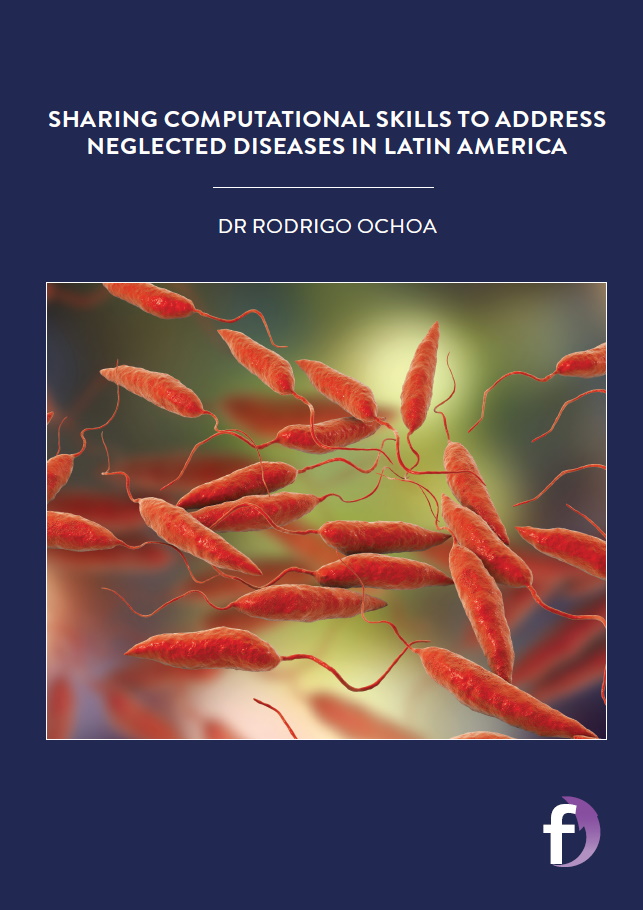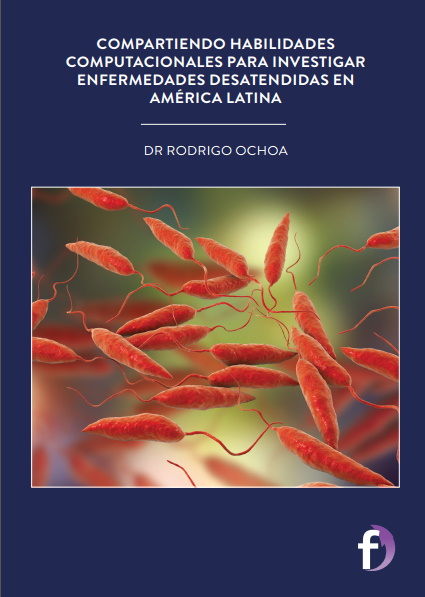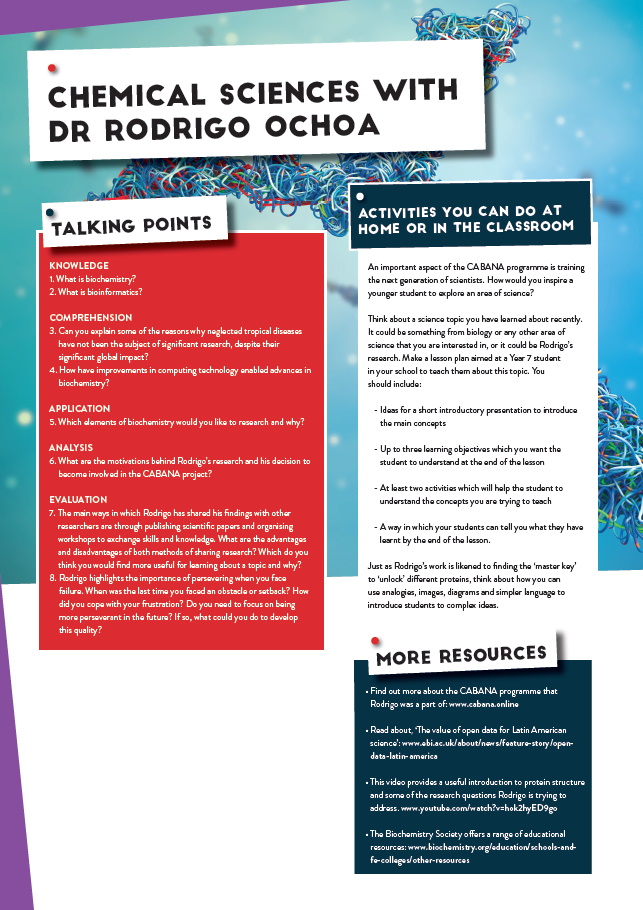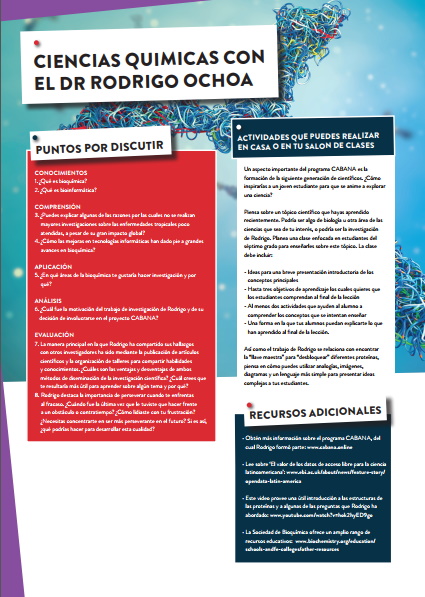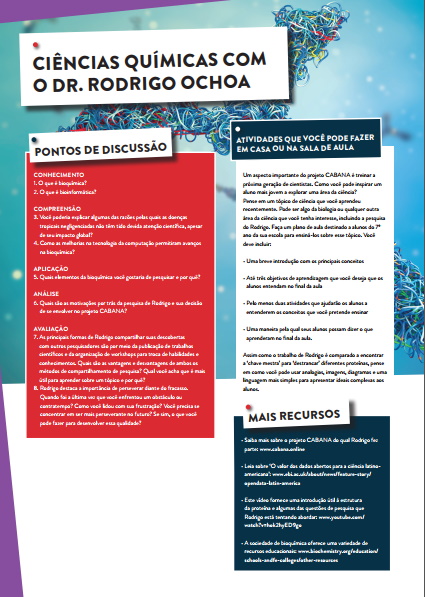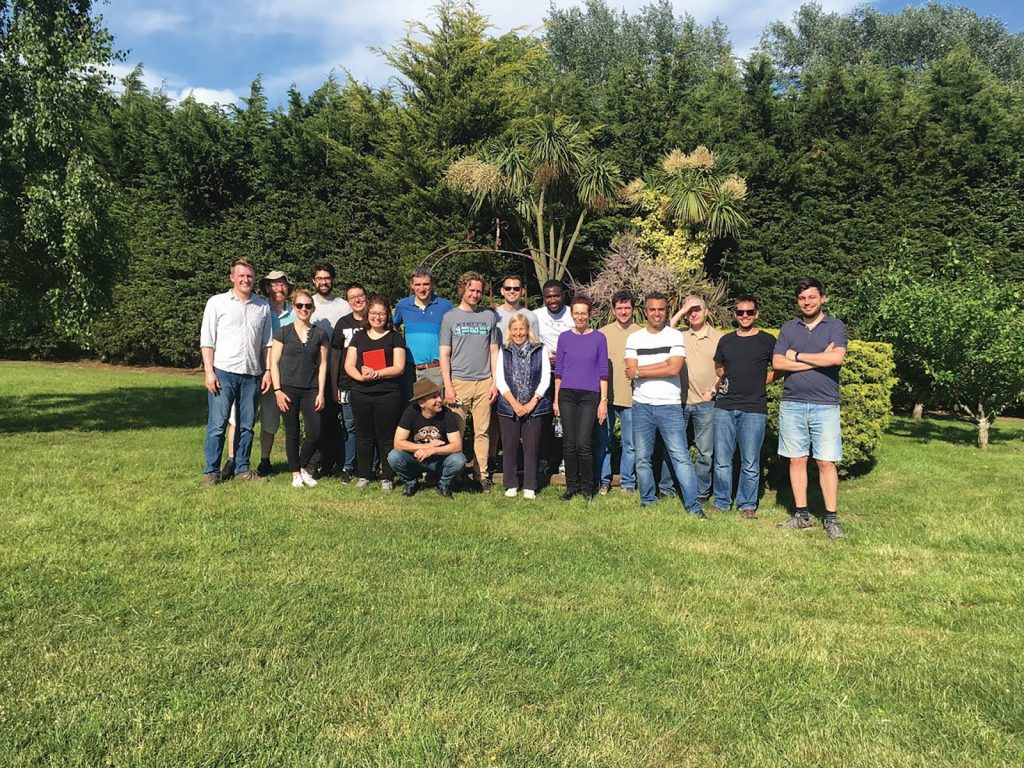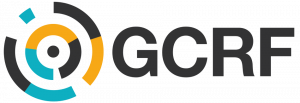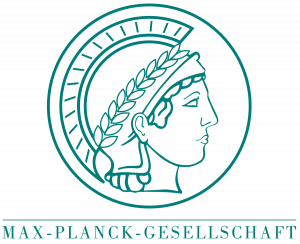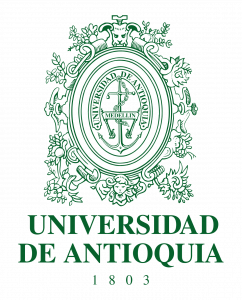Sharing computational skills to address neglected diseases in Latin America
Tropical diseases are a significant source of deaths across Latin America, but, until recently, there has been little interest in developing drugs and vaccines to tackle them. As part of the innovative CABANA project, Dr Rodrigo Ochoa from the University of Antioquia, in Colombia, uses his skills in biochemistry and bioinformatics to discover new drugs and improve the status of biochemical research in Latin America
TALK LIKE A CHEMICAL SCIENTIST
BIOINFORMATICS – using computational tools to understand large amounts of biological data
NEGLECTED TROPICAL DISEASES – a group of around 20 diseases which affect large numbers of people in tropical regions of the world, but which have received little attention in terms of treatment and prevention
LEISHMANIASIS – an infection caused by the Leishmania parasite
PEPTIDES – short chains of amino acids, which are the molecular building blocks of proteins
RECEPTOR PROMISCUITY – a feature of some proteins that enables them to bind to lots of different molecules
The World Health Organization estimates that over 1.7 billion people, mainly in developing countries, are at risk of neglected tropical diseases (NTDs). NTDs, such as leishmaniasis and leprosy, cause over 200,000 deaths and millions of disabilities each year. Despite this, treatments either do not exist for many NTDs, or are too expensive to be deployed on a large scale. These diseases are neglected because they are not profitable for pharmaceutical companies to invest in, and the people whom they affect tend to be the poorest and most vulnerable in society, who have the least political voice. Additionally, developing countries, which these diseases primarily affect, often lack the capacity to carry out their own research to find new treatments and vaccines.
CABANA (Capacity building for bioinformatics in Latin America) is an international research project funded by the UK’s Official Development Assistance Budget. Focusing on infectious diseases, as well as biodiversity and food security, CABANA supports scientists in Latin America to use bioinformatics methods to solve societal problems. Building these capabilities is crucial to enable Latin American countries to conduct research to find new treatments and vaccines for NTDs. CABANA is a collaboration between the European Bioinformatics Institute (EMBL-EBI) in the UK, and nine universities and research organisations spread across Latin America. As Dr Rodrigo Ochoa explains, the aim of CABANA is to, “provide connections with top research labs in Europe and Latin America, improving the competitiveness of the trainees and their research centres.”
As part of his PhD in Chemical Sciences at the University of Antioquia, Colombia, Rodrigo participated in a six-month placement at EMBL-EBI, where he used structural bioinformatics and biophysics simulations to design peptides that can be used as potential vaccines for NTDs.
WHAT ARE PEPTIDES AND WHY ARE THEY IMPORTANT TO STUDY?
Peptides are short chains of amino acids that make up proteins. Proteins are the molecules that carry out most of the biological functions within our cells. Most drugs work by altering the ability of specific proteins to bind to other molecules and carry out their biological functions. Rodrigo studies the way in which proteins bind to each other. This process of binding can be compared to a key fitting into a lock. Most proteins are designed to bind to a specific type of molecule, just as a key is made to fit into a specific lock. However, in a similar way to how a master key can unlock several different locks, some proteins can adapt and are able to bind to lots of different molecules. The reasons for this receptor promiscuity are not fully understood, so Rodrigo applies computational methods to understand how and why this can happen. Some of these proteins are involved in the immune system and are potential targets for treating NTDs.
HOW DOES RODRIGO CONDUCT HIS RESEARCH?
The computational methods Rodrigo uses involve the analysis of protein structures, as well as the simulation of protein interactions, in order to assess how small adjustments to the protein, or the binding partner, can impact their ‘connection’. Simulating protein interactions is crucial to understand the mechanism of the proteins and the molecules they interact with, from a molecular perspective. By repeating this process millions of times, he can understand which parts of the proteins are the most important in controlling their ability to bind to different molecules. This enables the design of new drugs, made from peptides, that can specifically target these areas to deliver medical benefits.
Running these kinds of analyses presents certain challenges depending on the organism being studied. In the case of NTDs, information about the molecular structure of proteins is scarce, which is why these diseases are considered ‘neglected’. Like many other researchers in the field, Rodrigo relies on computational methodologies to infer these structures; a mixture of evolutionary information and data science enable him to fill in the knowledge gaps.
WHAT SUCCESS HAS RODRIGO HAD?
So far, Rodrigo’s research has identified multiple molecules with potential therapeutic effects. These have been tested in laboratory-grown cells with positive results, and one of them has recently been patented by the Colombian government. Rodrigo and his collaborators have also developed a method to design variants in peptides as a potential method for creating more personalised vaccines. All the findings are currently in experimental and optimisation phases that are expected to move forward into viable products to tackle problems that concern the Latin American community.
HOW HAS RODRIGO SHARED HIS WORK WITH OTHER RESEARCHERS?
The main way in which scientific research is shared is through the publication of scientific papers, which explain how the research was carried out, and what the useful findings were. Along with his colleagues at the University of Antioquia and EMBL-EBI, Rodrigo has published 12 papers describing his research into peptides and NTDs. As part of his involvement in CABANA, Rodrigo also helped to organise a workshop to share the bioinformatics skills he learned on his EBI placement with other researchers in Latin America. This involved bringing together 25 early career researchers from 11 countries for a four-day workshop in Colombia, where they had a chance to learn new skills and form connections with other researchers in the field of bioinformatics and NTDs.
The CABANA project has also enabled Rodrigo to meet and collaborate with other researchers who share his interests. One research project that focused on modelling and testing possible inhibitors of parasite’s proteins, with the aim of disease control, was led by Rodrigo and conducted between researchers of three different Latin American countries. This was a wonderful opportunity to share knowledge and unite efforts towards solving issues on communicable diseases affecting the region.
Projects such as CABANA – and Rodrigo’s valuable contribution to it – show the importance of collaboration between developed and developing countries in creating the capacity for the latter to conduct their own research, not just in bioinformatics but in all branches of science.
 DR RODRIGO OCHOA
DR RODRIGO OCHOA
Currently: Postdoctoral Research Fellow, Boehringer Ingelheim, Germany
FIELD OF RESEARCH: Chemical Sciences
PHD RESEARCH PROJECT: Using computational methods to develop new drugs and vaccines for neglected tropical diseases
FUNDERS: University of Antioquia, MinCiencias, The Max Planck Society, UKRI-BBSRC [grant no. BB/P027849/1], European Molecular Biology Laboratory
ABOUT CHEMICAL SCIENCES
Chemical sciences is a broad field encompassing many aspects of chemical research. One of the largest areas of research is biochemistry, which is the study of the chemistry within living organisms. The behaviour and health of organisms is, ultimately, controlled by the chemical processes that occur inside and outside the cells, so biochemistry is crucial to understanding disease and finding new treatments and vaccines. There are both lab-based and computational ways of studying biochemistry, and the two complement each other very well. Modern-day biochemistry requires many more computational skills than it has in the past, and the area of bioinformatics is likely to keep growing.
WHAT DOES MODERN BIOCHEMISTRY LOOK LIKE?
The core of biochemistry is analysing the chemical composition of the molecules that make up cells and conducting experiments to see how cells are affected by changing their composition, such as by applying drugs to try to correct disease.
Modern biochemistry has been driven by major advances in technology over the past 50 years, which allow us to measure and control the molecules within cells with ever increasing degrees of accuracy. Another major technological advance is the application of computing power to process very large amounts of data and look for patterns that could never be found by human researchers. This is the field of bioinformatics, which is a combination of computer science, statistics and biochemistry, and is one of the fastest growing fields within the life sciences. Computing power has also been used to conduct experiments that would be far too technically challenging, or time consuming, to conduct in the lab. Researchers can model complex molecules such as proteins on a computer and see what effect the millions of possible chemical variations have on their structure and function. They can then use this information to identify candidate molecules, which could be tested as drugs to target these proteins.
AN EXCITING AND RAPIDLY CHANGING FIELD
Advances in computer power are constantly changing the limits of what is possible in bioinformatics and biochemistry. New projects such as AlphaFold, an artificial intelligence programme, take advantage of the latest techniques in computer science to search for solutions to longstanding biochemical questions. There is a real need to take these techniques from the established labs where they were developed, and apply them to problems affecting the developing world, where resources are much less available. This provides many opportunities for researchers at all stages of their careers, including their first steps on the career ladder, to make a difference to international problems that are currently neglected.
Reference
https://doi.org/10.33424/FUTURUM237
BIOINFORMATICS – using computational tools to understand large amounts of biological data
NEGLECTED TROPICAL DISEASES – a group of around 20 diseases which affect large numbers of people in tropical regions of the world, but which have received little attention in terms of treatment and prevention
LEISHMANIASIS – an infection caused by the Leishmania parasite
PEPTIDES – short chains of amino acids, which are the molecular building blocks of proteins
RECEPTOR PROMISCUITY – a feature of some proteins that enables them to bind to lots of different molecules
The World Health Organization estimates that over 1.7 billion people, mainly in developing countries, are at risk of neglected tropical diseases (NTDs). NTDs, such as leishmaniasis and leprosy, cause over 200,000 deaths and millions of disabilities each year. Despite this, treatments either do not exist for many NTDs, or are too expensive to be deployed on a large scale. These diseases are neglected because they are not profitable for pharmaceutical companies to invest in, and the people whom they affect tend to be the poorest and most vulnerable in society, who have the least political voice. Additionally, developing countries, which these diseases primarily affect, often lack the capacity to carry out their own research to find new treatments and vaccines.
CABANA (Capacity building for bioinformatics in Latin America) is an international research project funded by the UK’s Official Development Assistance Budget. Focusing on infectious diseases, as well as biodiversity and food security, CABANA supports scientists in Latin America to use bioinformatics methods to solve societal problems. Building these capabilities is crucial to enable Latin American countries to conduct research to find new treatments and vaccines for NTDs. CABANA is a collaboration between the European Bioinformatics Institute (EMBL-EBI) in the UK, and nine universities and research organisations spread across Latin America. As Dr Rodrigo Ochoa explains, the aim of CABANA is to, “provide connections with top research labs in Europe and Latin America, improving the competitiveness of the trainees and their research centres.”
As part of his PhD in Chemical Sciences at the University of Antioquia, Colombia, Rodrigo participated in a six-month placement at EMBL-EBI, where he used structural bioinformatics and biophysics simulations to design peptides that can be used as potential vaccines for NTDs.
WHAT ARE PEPTIDES AND WHY ARE THEY IMPORTANT TO STUDY?
Peptides are short chains of amino acids that make up proteins. Proteins are the molecules that carry out most of the biological functions within our cells. Most drugs work by altering the ability of specific proteins to bind to other molecules and carry out their biological functions. Rodrigo studies the way in which proteins bind to each other. This process of binding can be compared to a key fitting into a lock. Most proteins are designed to bind to a specific type of molecule, just as a key is made to fit into a specific lock. However, in a similar way to how a master key can unlock several different locks, some proteins can adapt and are able to bind to lots of different molecules. The reasons for this receptor promiscuity are not fully understood, so Rodrigo applies computational methods to understand how and why this can happen. Some of these proteins are involved in the immune system and are potential targets for treating NTDs.
HOW DOES RODRIGO CONDUCT HIS RESEARCH?
The computational methods Rodrigo uses involve the analysis of protein structures, as well as the simulation of protein interactions, in order to assess how small adjustments to the protein, or the binding partner, can impact their ‘connection’. Simulating protein interactions is crucial to understand the mechanism of the proteins and the molecules they interact with, from a molecular perspective. By repeating this process millions of times, he can understand which parts of the proteins are the most important in controlling their ability to bind to different molecules. This enables the design of new drugs, made from peptides, that can specifically target these areas to deliver medical benefits.
Running these kinds of analyses presents certain challenges depending on the organism being studied. In the case of NTDs, information about the molecular structure of proteins is scarce, which is why these diseases are considered ‘neglected’. Like many other researchers in the field, Rodrigo relies on computational methodologies to infer these structures; a mixture of evolutionary information and data science enable him to fill in the knowledge gaps.
WHAT SUCCESS HAS RODRIGO HAD?
So far, Rodrigo’s research has identified multiple molecules with potential therapeutic effects. These have been tested in laboratory-grown cells with positive results, and one of them has recently been patented by the Colombian government. Rodrigo and his collaborators have also developed a method to design variants in peptides as a potential method for creating more personalised vaccines. All the findings are currently in experimental and optimisation phases that are expected to move forward into viable products to tackle problems that concern the Latin American community.
HOW HAS RODRIGO SHARED HIS WORK WITH OTHER RESEARCHERS?
The main way in which scientific research is shared is through the publication of scientific papers, which explain how the research was carried out, and what the useful findings were. Along with his colleagues at the University of Antioquia and EMBL-EBI, Rodrigo has published 12 papers describing his research into peptides and NTDs. As part of his involvement in CABANA, Rodrigo also helped to organise a workshop to share the bioinformatics skills he learned on his EBI placement with other researchers in Latin America. This involved bringing together 25 early career researchers from 11 countries for a four-day workshop in Colombia, where they had a chance to learn new skills and form connections with other researchers in the field of bioinformatics and NTDs.
The CABANA project has also enabled Rodrigo to meet and collaborate with other researchers who share his interests. One research project that focused on modelling and testing possible inhibitors of parasite’s proteins, with the aim of disease control, was led by Rodrigo and conducted between researchers of three different Latin American countries. This was a wonderful opportunity to share knowledge and unite efforts towards solving issues on communicable diseases affecting the region.
Projects such as CABANA – and Rodrigo’s valuable contribution to it – show the importance of collaboration between developed and developing countries in creating the capacity for the latter to conduct their own research, not just in bioinformatics but in all branches of science.
 DR RODRIGO OCHOA
DR RODRIGO OCHOA
Currently: Postdoctoral Research Fellow, Boehringer Ingelheim, Germany
FIELD OF RESEARCH: Chemical Sciences
PHD RESEARCH PROJECT: Using computational methods to develop new drugs and vaccines for neglected tropical diseases
FUNDERS: University of Antioquia, MinCiencias, The Max Planck Society, UKRI-BBSRC [grant no. BB/P027849/1], European Molecular Biology Laboratory
ABOUT CHEMICAL SCIENCES
Chemical sciences is a broad field encompassing many aspects of chemical research. One of the largest areas of research is biochemistry, which is the study of the chemistry within living organisms. The behaviour and health of organisms is, ultimately, controlled by the chemical processes that occur inside and outside the cells, so biochemistry is crucial to understanding disease and finding new treatments and vaccines. There are both lab-based and computational ways of studying biochemistry, and the two complement each other very well. Modern-day biochemistry requires many more computational skills than it has in the past, and the area of bioinformatics is likely to keep growing.
WHAT DOES MODERN BIOCHEMISTRY LOOK LIKE?
The core of biochemistry is analysing the chemical composition of the molecules that make up cells and conducting experiments to see how cells are affected by changing their composition, such as by applying drugs to try to correct disease.
Modern biochemistry has been driven by major advances in technology over the past 50 years, which allow us to measure and control the molecules within cells with ever increasing degrees of accuracy. Another major technological advance is the application of computing power to process very large amounts of data and look for patterns that could never be found by human researchers. This is the field of bioinformatics, which is a combination of computer science, statistics and biochemistry, and is one of the fastest growing fields within the life sciences. Computing power has also been used to conduct experiments that would be far too technically challenging, or time consuming, to conduct in the lab. Researchers can model complex molecules such as proteins on a computer and see what effect the millions of possible chemical variations have on their structure and function. They can then use this information to identify candidate molecules, which could be tested as drugs to target these proteins.
AN EXCITING AND RAPIDLY CHANGING FIELD
Advances in computer power are constantly changing the limits of what is possible in bioinformatics and biochemistry. New projects such as AlphaFold, an artificial intelligence programme, take advantage of the latest techniques in computer science to search for solutions to longstanding biochemical questions. There is a real need to take these techniques from the established labs where they were developed, and apply them to problems affecting the developing world, where resources are much less available. This provides many opportunities for researchers at all stages of their careers, including their first steps on the career ladder, to make a difference to international problems that are currently neglected.
EXPLORE A CAREER IN CHEMICAL SCIENCES
• The Royal Society of Chemistry has an excellent careers section on its website for you to find out more about what a career as a chemical scientist could offer you.
• The CABANA project has several online courses teaching students about various aspects of bioinformatics.
• Explore the work of The European Bioinformatics Institute (EMBL-EBI).
• According to Payscale.com, the average salary for a bioinformatics scientist in the UK is £40,000.
• According to Erieri.com, the average salary for a bioinformatics scientist in Colombia is COP 50,000,000.
• Chemistry and biology are the core subjects that are important to study at school.
• At university, biochemistry and molecular biology provide the basic knowledge that is needed to understand the types of problems Rodrigo is working on.
• Some form of training in statistics and programming is very valuable as computational methods are heavily used in
most areas of bioinformatics and chemical sciences today.
HOW DID RODRIGO BECOME A CHEMICAL SCIENTIST?
WHAT WERE YOUR INTERESTS WHEN YOU WERE GROWING UP?
My curiosity has always driven me to try to understand fundamental questions with a practical perspective. In particular, the field of computer science and programming always fascinated me and caught my attention, especially when applied to non-conventional topics like biology and chemistry. This is why I pursued a career in bioengineering and moved into the fields of bio- and chemo-informatics.
WHO OR WHAT INSPIRED YOU TO BECOME A SCIENTIST?
As a Latin American, it is not very common to hear about scientists and their impact. When I started to study engineering, I found a wonderful opportunity to combine my career skills to provide new tools for scientists and, at the same time, try to answer those questions by myself with hybrid approaches using molecular information and efficient algorithms.
WHAT ARE YOUR PROUDEST CAREER ACHIEVEMENTS SO FAR?
During my PhD, I had the chance to publish multiple tools and advancements in the design of peptides and molecules with therapeutic purposes, especially in cases focused on treating leishmaniasis, a parasitic disease affecting millions of people. Any effort in that direction is a big personal and professional achievement for me.
NOW THAT YOU HAVE COMPLETED YOUR PHD, WHAT ARE YOUR AIMS FOR THE FUTURE?
Having recently started a postdoctoral position at the pharmaceutical company Boehringer Ingelheim, in Germany, my aim is to work with the computational chemistry team to develop new tools that will accelerate the development of new drugs for multiple purposes.
RODRIGO’S TOP TIPS
01 You must be willing to get frustrated and persevere. Scientific research rarely happens completely in the way that you planned.
02 Try to make lots of connections with different researchers in your field and don’t be afraid to ask questions with a positive and critical attitude.
Write it in the comments box below and Rodrigo will get back to you. (Remember, researchers are very busy people, so you may have to wait a few days.)

